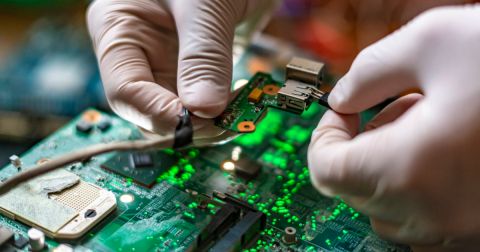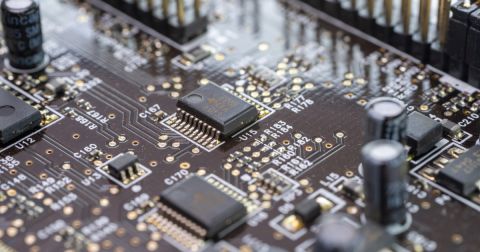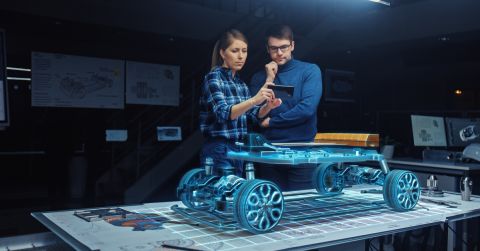Electret Generators: The Unsung Heroes of Motion Energy Harvesting

Electret generators are the unsung heroes of energy harvesting. These electrostatic generators convert ambient mechanical energy – such as vibration, motion, and pressure – into electrical power using electret materials. With no coils, no magnets, and few moving parts, they use electrostatic induction to convert subtle movements into usable current, with no external priming or charging required. Their simplicity and durability make them effective in environments where other energy-harvesting technologies fall short.
Electret generators operate through changes in capacitance between charged materials and electrodes, requiring only minimal mechanical input to produce power. This streamlined structure allows them to thrive in applications where size, weight, and longevity matter, including wearable health monitors, embedded industrial sensors, and smart infrastructure nodes.
In a world where billions of disposable batteries are used once and discarded, electret generators offer a quietly radical alternative: electronics that scavenge power from their surroundings. As new materials, Micro-Electro-Mechanical Systems (MEMS) integrations, and ultra-efficient power management ICs evolve, electret-based systems are confidently stepping out of the lab and into the field.
How Electret Generators Work
Electret generators use a capacitive structure, with one plate typically coated in an electret material that holds a quasi-permanent electric field. When mechanical motion causes relative movement between the electret and a nearby electrode – such as sliding, separation or compression – the capacitance between the two surfaces changes. This shifting capacitance induces current flow in an external circuit, enabling energy harvesting from low-frequency vibrations or intermittent motion.
Designs vary by application, from simple parallel-plate layouts to compact MEMS-compatible geometries. These structures influence voltage output and response to specific motion profiles. Modern electrets can retain their charge for years under normal conditions, and ongoing research continues to improve material stability and long-term reliability for autonomous maintenance-free systems.
Comparative Advantages
Compared to other energy harvesting technologies, electret generators offer several distinct advantages:
- Performance characteristics: They perform well at low-frequency vibrations (1–100 Hz) common in everyday environments and human movement, maintaining performance across broader frequency ranges than piezoelectric solutions.
- Structural benefits: They require no coils or magnetic materials (unlike electromagnetic induction), enabling thin form factors and flexible implementations.
- Output properties: They generate high-voltage output that is well suited for capacitive storage or triggering low-power ICs.
- Reliability factors: With minimal moving parts, they offer extended operational lifetimes.
- Manufacturing compatibility: Their simple structure is conducive to miniaturization and potential compatibility with standard microelectronic manufacturing techniques.
Commercial Building Blocks and Emerging Research
While proprietary commercial components specifically marketed as electret generators are still emerging, several key technologies and products support this field:
- e-peas Energy Harvesting PMICs: e-peas has developed specialized power management integrated circuits (PMICs) that are compatible with various energy harvesting technologies, including electrostatic sources. Their AEM10941 and AEM30940 PMICs can handle the high-impedance and variable outputs characteristic of electret generators, enabling effective energy capture and management.
- STMicroelectronics Energy Harvesting Solutions: STMicroelectronics offers energy harvesting solution components that interface with electrostatic energy sources. The SPV1050 ultra-low power energy harvester and battery charger can work with inputs from various harvesting technologies, including adaptations for electret-based systems, providing power management for wireless sensor applications.
- MEMS-Based Electret Energy Harvesters: Recent advancements in MEMS technology have led to the development of electret-based vibration energy harvesters. For instance, researchers have proposed MEMS electret vibration energy harvesters with embedded bistable electrostatic springs, aiming for broadband response and enhanced energy conversion efficiency.
- A notable example is the MEMS electret vibration energy harvester developed by researchers at the University of Tokyo. Utilizing a bistable mechanism to achieve wide operational bandwidth and improved energy conversion efficiency, this device demonstrates the potential of integrating electret materials into MEMS structures for efficient energy harvesting in compact systems.
Where Electrets Shine
From smart buildings to smart fabrics, electret-based energy harvesters are finding roles in real-world applications that demand long life, low maintenance and ultra-low power.
- Smart Buildings: Prototypes have demonstrated self-powered occupancy sensors utilizing electret generators to harvest energy from door movements, human traffic and HVAC systems.
- Wearable Technology: Georgia Tech researchers developed an energy-harvesting fabric that generates electricity from both sunlight and body movement, employing electret materials to potentially power health monitoring sensors without batteries.
- Industrial Monitoring: Electret-based vibration-powered condition monitoring systems have been prototyped for use in manufacturing equipment. These systems can detect abnormal vibration patterns while self-powering from the monitored conditions.
- Transportation: Electret generators embedded in road infrastructure are being explored as a means to harvest energy from passing vehicles, with the goal of powering roadside sensors and monitoring equipment.

Design Challenges and Best Practices
The high internal impedance of electret generators requires specialized power conditioning circuits to extract energy efficiently. In addition, the variable nature of harvested power demands carefully designed energy storage systems to ensure consistent output.
Effective design approaches include:
- Impedance matching circuits tailored to electrostatic sources
- Adaptive power management techniques that handle fluctuating input levels
- Storage systems that balance capacitive and battery elements based on application needs
- Mechanical structures optimized to maximize displacement at specific vibration frequencies
Engineers should consider the frequency profile of available mechanical energy when selecting or designing components for electret generators. Different materials and electrode configurations exhibit peak efficiency at different ranges, so characterizing the target environment is key to optimal performance.
Future Outlook
As demand grows for self-powered devices, electret technology is gaining serious attention from engineers focused on longevity, autonomy and minimal maintenance. Recent innovations are addressing longstanding challenges and opening new avenues for application.
- Enhanced Energy Management Units (EMUs): Researchers have developed a high-performance energy management unit (EMU) that significantly improves the efficiency of electrostatic generators. These EMUs address impedance mismatches, enabling more effective energy harvesting from ambient sources.
- Advanced Materials Development: The creation of gel-based electrets capable of retaining substantial electrostatic charges has led to flexible, lightweight sensors. These materials are well-suited for wearable healthcare devices, converting low-frequency vibrations from human motion into electrical signals.
- Hybrid Energy Harvesting Systems: Combining piezoelectric and electrostatic principles, hybrid energy harvesters are being explored to maximize energy capture from mechanical pressure, especially in low-frequency applications.
- Miniaturization and Integration: Efforts continue to advance the integration of electret generators with MEMS, facilitating their incorporation into compact electronic devices. This miniaturization is crucial for applications in medical implants and portable electronics.
Together, advanced EMUs, innovative materials and hybrid systems are paving the way for electret generators to become a cornerstone in sustainable, self-powered technologies. As research progresses, we can anticipate broader adoption and novel applications across industries.
Engineering for Energy Independence
Electret generators aren’t flashy, but they’re quietly rewriting the rules of how we power electronics. With the ability to scavenge motion energy, they open the door to devices that last longer, run cleaner and require less maintenance. As materials improve and integration becomes easier, expect to see these humble generators show up in places where batteries simply can’t go.
For a deeper dive into energy harvesting, check out our article on the latest advancements in energy harvesting electronic components – and explore more than 400 commercially available energy harvesting components on Octopart that help turn light, heat, motion and magnetic fields into power.








